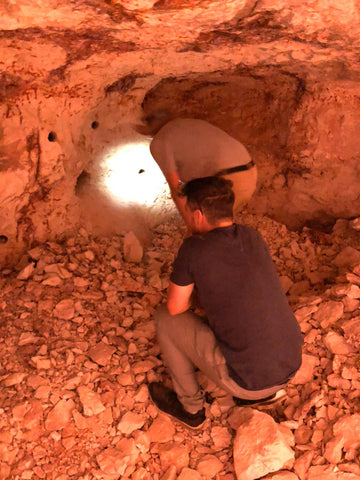Gemstones and Setting - What makes Oli&J unique?
Understanding Gemstone Value
Fake stones can be difficult to detect for the general public, and you will typically need a lot of experience in the field to be able to tell a real stone from a fake.
For example, lab-created Opals or cheaper alternatives commonly known as Doublets and Triplets.
Doublets and Triplets do not have the same strict standards compared to solid opals and are considered less valuable but it is generally sold for the same value as solid opal.

Opal is difficult to value and the evaluation process is even more complicated than diamonds.
This classification system considers the colour, pattern, brightness, shape, inclusion, body tone, origin and whether it is a natural opal versus a treated one.
Treated Opals can sometimes be sold as natural (more valuable), so it's important to be able to tell the difference between the two.
Is My Opal Real Or Fake?
-
Examine the Pattern:Synthetics typically look ‘too perfect’ in terms of pattern, colour, and direction. A real Opal should have less systematic patterns and more inconsistencies in brightness and colour throughout.
-
Look out for ‘columnar’ or ‘snake-skin’ texture/pattern:Turn the opal on its side and look through it. If you see straight column-like patterns, then the opal is likely synthetic.

Why Australian Opal?
Whilst Australian Opal tends to be more expensive, it’s important to note that each one is unique, and is therefore priced differently.



Types of Australian Opal

White (Milky) Opal
Extracted from the opal fields of Coober Pedy, Mintabie and Andamooka in South Australia. These opals are distinguished by a paler body tone and are less common and therefore less valuable compared to black or boulder opal.


Stone Hardness & Setting.
Stone hardness refers to how easy or difficult it is to scratch the surface of a stone.
Stone setting refers to how the jeweler has decided to display or embed the stone in a ring, bracelet or necklace.
The Mohs Hardness Scale can help you in understanding hard to softer stones.

Expensive jewelry is an investment of high value, and the stone has to be set accordingly depending on its hardness, in order to maximize the protection of that stone.
For example, rubies, diamonds, and sapphires rank highly on hardness (diamonds being the world's hardest), so they can be set in a more open setting such as bezel.
However, Opals are a very soft stone and easily scratched.
Therefore, we have developed a unique setting method that provides both the ultimate protection for soft stones, without compromising there visibility.
Types of Stone setting.

The Oli&J Setting Method
We protect the gemstone in our innovative enclosed setting, which is shielded by two impact-resistant mineral glass sheets, similar to bulletproof glass.
This protects the soft stone from bumps, drops, knocks, scratches, water, heat and other chemicals.
Providing maximum protection and visibility, all displayed in a modern and sophisticated style.

